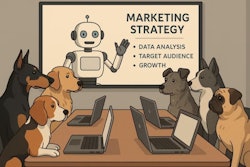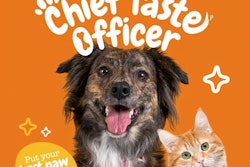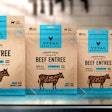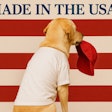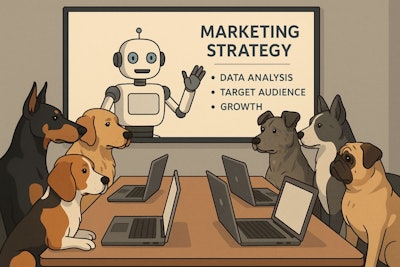
Artificial intelligence permeates our lives, but we may not realize it, Hana Bieliauskas, senior vice president and partner with Inspire PR Group, said during her presentation at Petfood Forum on April 28 in Kansas City, Missouri, U.S. From personalized Netflix recommendations to Instacart purchase prompts, AI-powered algorithms shape consumer experiences. In pet food marketing, AI can enhance targeting, boost pet owner engagement and refine product strategies.
“What can we as marketers use this AI for?” Bieliauskas said. “Well, AI can sort through massive amounts of data. It can take customer data, sort through it, and then segment it based on behaviors, preferences or buying history. “Then, as marketers, we can use that information to market to them more effectively. We can use that customer data to create marketing campaigns that really resonate with those specific individuals.
“AI is also great for predictive analysis. It takes all that data can tell us, such as these products might be popular at these times of the year or this flavor is emerging as a popular flavor, and that helps companies with product development and to better manage inventory.”
However, AI has limitations. Bieliauskas recommended that pet food marketers ask three questions when deciding if a task would be ideal for AI.
1. Is it data-driven?
2. Is it repetitive?
3. Does it involve prediction?
How pet food companies are leveraging AI
If the answer to any of those questions is yes, AI may be able to help, Bieliauskas said. Some pet food companies have already answered yes. She presented three case studies that showcase how leading pet food companies are already deploying AI.
Mars Petcare has committed US$1 billion over three years to digital innovation, much of it focused on AI. For example, the Greenies Dog Interpreter, developed with Amazon, allows pet owners to upload photos of their dogs and receive AI-generated “thoughts” about Greenies products.
“They encourage sharing of these fun little snippets from the dog, but also at the same time they were collecting customer data and building relationships with customers.”
Mars also uses an AI tool called Vizit to analyze how packaging visuals perform on e-commerce platforms globally. Insights from this tool have helped the company increase Amazon conversions by 30% simply by fine-tuning product imagery for local markets.
Purina’s Pet Food Finder offers a personalized product recommendation experience on its website. By leveraging interactive digital tools and collecting behavioral data, Purina improves both product targeting and customer loyalty.
Ollie, a DTC pet food brand, has pushed even further into AI. Through its acquisition of Dig Labs, Ollie now offers AI health screenings for issues like digestion and skin conditions. Its Food Feedback Loop system analyzes more than 20 million data points to adjust portion sizes, refine recipes and guide product development.
“AI offer offers huge opportunities,” she said. “We know that it offers opportunity across many different industries, but in marketing specifically, there's a lot that it can do. Think of ways that you can use it in your workflow. Use it in your day to day and really train it best. If you're not using it, I really encourage everybody to play with it, start with it, because we really are seeing, you know, it's going to be part of our daily lives.”



